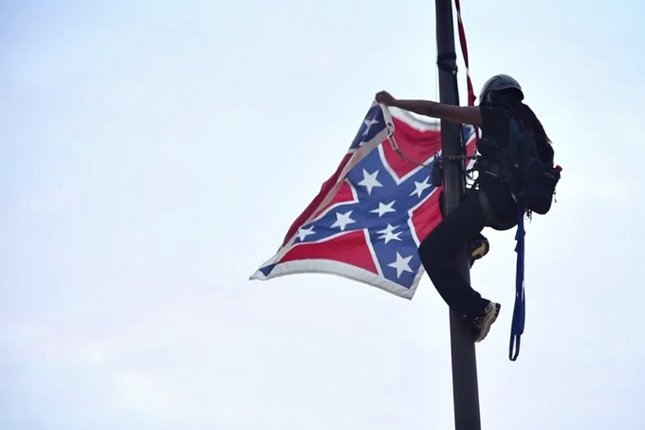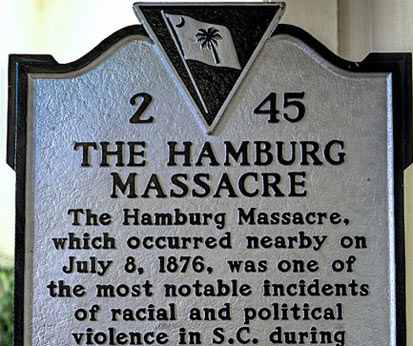|
|
|
Zinn Education Project News
|
Teaching About the Confederate Flag
The horrific events in Charleston, South Carolina have ignited renewed debate about the Confederate battle flag. It's an opportunity for educators to revisit the nature of the Confederacy that the flag represented. The secession of Southern states was triggered by one thing: the desperate quest to preserve slavery. So often, textbooks have repeated the propaganda of Confederate apologists: "The Civil War was fought to preserve states rights." No. That simply is not true. Where was this love for states' rights when the South demanded strict enforcement of the Fugitive Slave Act, so that Northern states could not become a haven for people escaping slavery?
We bring you a selection of articles and teaching resources to help students understand this history.
|
Articles
|

|
By Bree Newsome
You see, I know my history and my heritage. The Confederacy is neither the only legacy of the South nor an admirable one. The Southern heritage I embrace is the legacy of a people unbowed by racial oppression. It includes the many people who rarely make the history books but without whom there is no movement. Continue reading.
| 
|
By Ta-Nehisi Coates, The Atlantic
The Confederate flag is directly tied to the Confederate cause, and the Confederate cause was white supremacy. This claim is not the result of revisionism. It does not require reading between the lines. It is the plain meaning of the words of those who bore the Confederate flag across history. These words must never be forgotten. Over the next few months the word "heritage" will be repeatedly invoked. It would be derelict to not examine the exact contents of that heritage. Continue reading.
| 
|
By James W. Loewen
The Confederates won with the pen (and the noose) what they could not win on the battlefield: the cause of white supremacy and the dominant understanding of what the war was all about. We are still digging ourselves out from under the misinformation they spread, which has manifested in our public monuments and our history books. Continue reading.
| 
|
By William Loren Katz
The Confederate flag represents a threat to citizens of color, a symbol of treason against the United States, and a war fought on behalf of slaveholders. But there are other equally offensive symbols that have not attracted the attention they should. For example, a statue of former South Carolina governor and U.S. Senator Ben Tillman stands in the state Capitol. Tillman was an advocate of lynching. Continue reading. |
|
Teaching Resources on the Civil War and Reconstruction
|

|
Teaching Activity. Role play based on the election of 1860 allows students to explore the political debates of the time and the real reasons for the Civil War. Download.
| 
|
Teaching Activity. Students examine excerpts from primary documents to explore some of the myths about the Civil War. Download.
| 
|
Teaching Activity. This timeline can be used as a resource for lessons on the Civil War, President Lincoln, the 54th Regiment, and the end of slavery. Download.
| 
|
|
|
Do you want more students to learn people's history?
Without spending a dime, you can help provide the
Zinn Education Project with critical funding. Your vote determines
how much funding we receive----up to $100,000.
|
|
|
|
|
 |
The goal of the Zinn Education Project is to introduce students to a more accurate, complex, and engaging understanding of United States history.
| |
|
|
|
| |
|
|
© 2015 The Zinn Education Project, a collaboration of
|  |
and
|  |
.
|
|
|
|
|